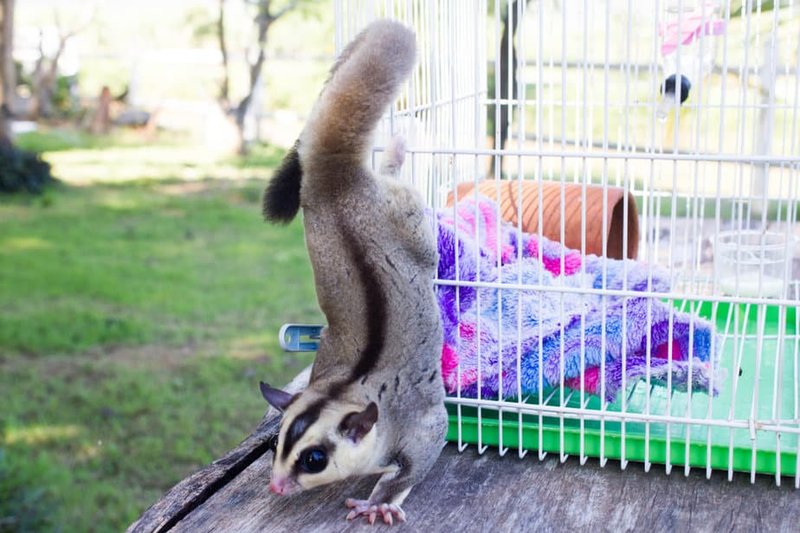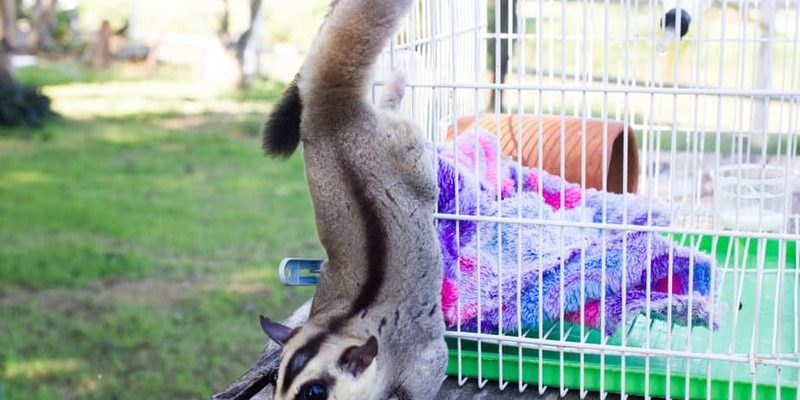
Understanding how sugar gliders interact with other pets requires a closer look. These tiny, nocturnal creatures are full of personality and can be quite social—but it doesn’t mean every pet will vibe well with them. In this article, we’ll dive into the factors that determine whether your sugar glider can coexist peacefully with your furry, scaly, or feathered friends.
Understanding Sugar Gliders’ Social Nature
Sugar gliders are naturally social animals. In the wild, they live in groups and rely on each other for companionship. This means that, ideally, they thrive when they have a buddy—another sugar glider, for instance. When you bring one home, it’s essential to think about their social needs. Without another sugar glider, they might become lonely and stressed.
If you’re considering introducing a sugar glider to your household, it’s important to remember that the first step is meeting their social needs. They can bond closely with their human caregivers, but they still need interaction, playtime, and mental stimulation. Think of it as providing them a fulfilling social life. You wouldn’t want to leave your best friend at home all day without any fun, right?
Interactions with Dogs
When it comes to dogs, the situation can be a bit tricky. Dogs are often curious and may want to play with a sugar glider. But here’s the thing: not all dogs are safe around small animals. Breeds that are high-energy or have strong prey drives can pose a danger to your sugar glider. If you have a larger dog, it’s crucial to monitor any interactions very closely.
However, there are some dogs that can coexist harmoniously with sugar gliders, particularly those that have a calm demeanor and are accustomed to smaller pets. A gentle introduction is key. For example, you might want to let your sugar glider explore a room while your dog is on a leash, allowing them to get familiar with each other’s scents without direct contact. Supervision, patience, and positive reinforcement will go a long way here.
Interactions with Cats
Cats can be a whole other ballgame. They’re often more independent than dogs and have natural hunting instincts. Sugar gliders, being small and quick, can trigger a cat’s predatory behavior. If you already have a cat, you might be wondering what to do. The best approach is to never leave them alone together. Safety first!
Introducing them gradually can help. Start by allowing your cat to observe the sugar glider from a distance. You might notice them curiously watching. Over time, you can reduce the distance, but only if your cat behaves calmly. Always look for signs of stress in both pets. If your cat shows too much interest or aggression, it’s best to keep them separated.
Interactions with Other Small Animals
If you have other small pets, like hamsters, guinea pigs, or rabbits, you might be curious about how they would interact with a sugar glider. Generally, mixing species isn’t recommended. Each type of pet has unique needs and temperaments.
For example, while hamsters are typically more solitary, sugar gliders need social interaction. Mixing these animals can lead to stress and health issues. Furthermore, the presence of a sugar glider might make other small pets anxious, too. If you really want to have both types of pets, make sure to keep their living spaces separate and give them each the attention they deserve.
Introducing New Pets Gradually
When bringing a sugar glider home, it’s essential to introduce them to your other pets carefully. A gradual introduction can significantly reduce stress for everyone involved. Start by setting up a safe space for your sugar glider. This could be a small, quiet room that other pets can’t access.
Once your sugar glider is comfortable in their new environment, you can begin the introduction process. For dogs or cats, let them sniff around the area without direct access to the sugar glider. You can also use baby gates to create barriers while allowing them to see and hear one another. Consistent, positive interactions are crucial. Reward calm behavior with treats or praise to create a positive experience for both pets.
Signs of Stress or Aggression
As you navigate your sugar glider’s interactions with other pets, it’s essential to be mindful of any signs of stress or aggression. Sugar gliders can become overwhelmed, and their body language is key to understanding how they feel. Look for signs like:
- Flattened ears
- Hissing or growling sounds
- Sudden attempts to escape
- Unusual grooming or hiding behavior
If you notice these signs, it may be time to reassess the living arrangements. Your sugar glider’s well-being should always be a priority. It’s better to keep them separated than to risk a negative encounter.
Bringing a sugar glider into your home when you have other pets is a big decision that requires planning, patience, and care. While sugar gliders can get along with some pets, it’s not a guarantee with every animal. Each pet has its own personality, which will influence its interactions.
With thoughtful introductions and careful supervision, it’s possible to create a harmonious environment for all your furry friends. Just remember to keep their different needs in mind, and you might find that your sugar glider and your other pets can form a delightful, if unconventional, family unit.

